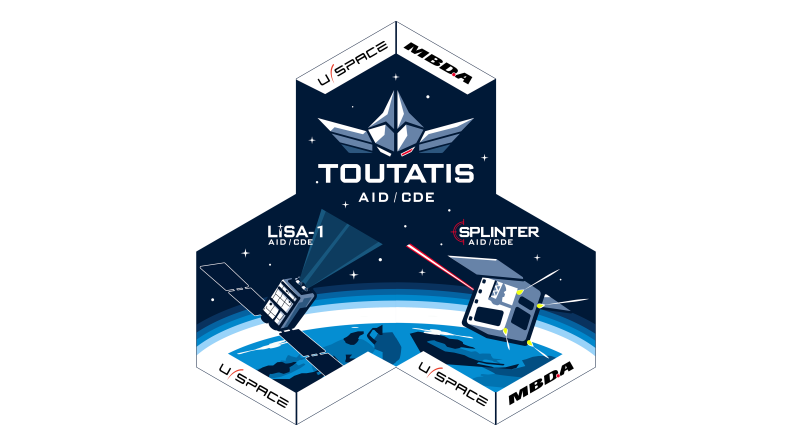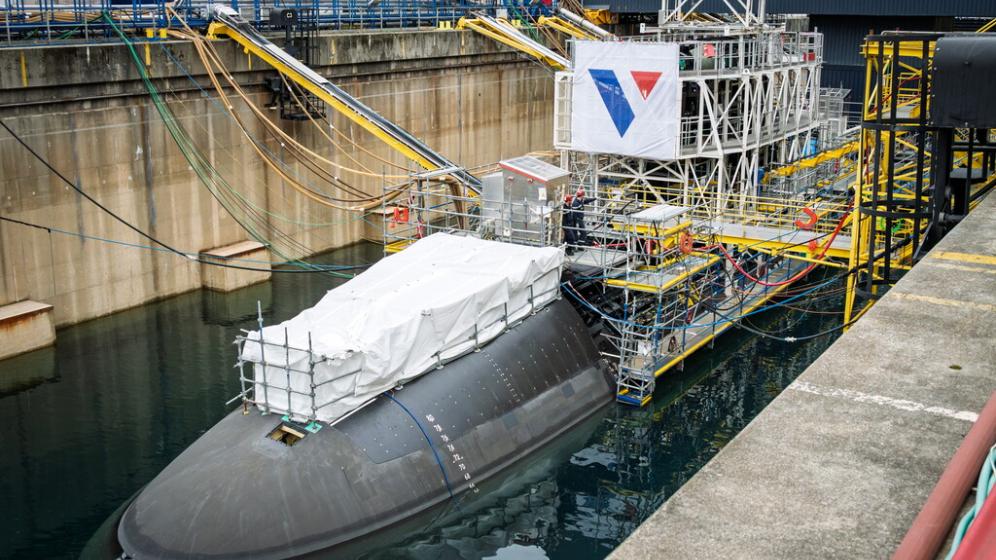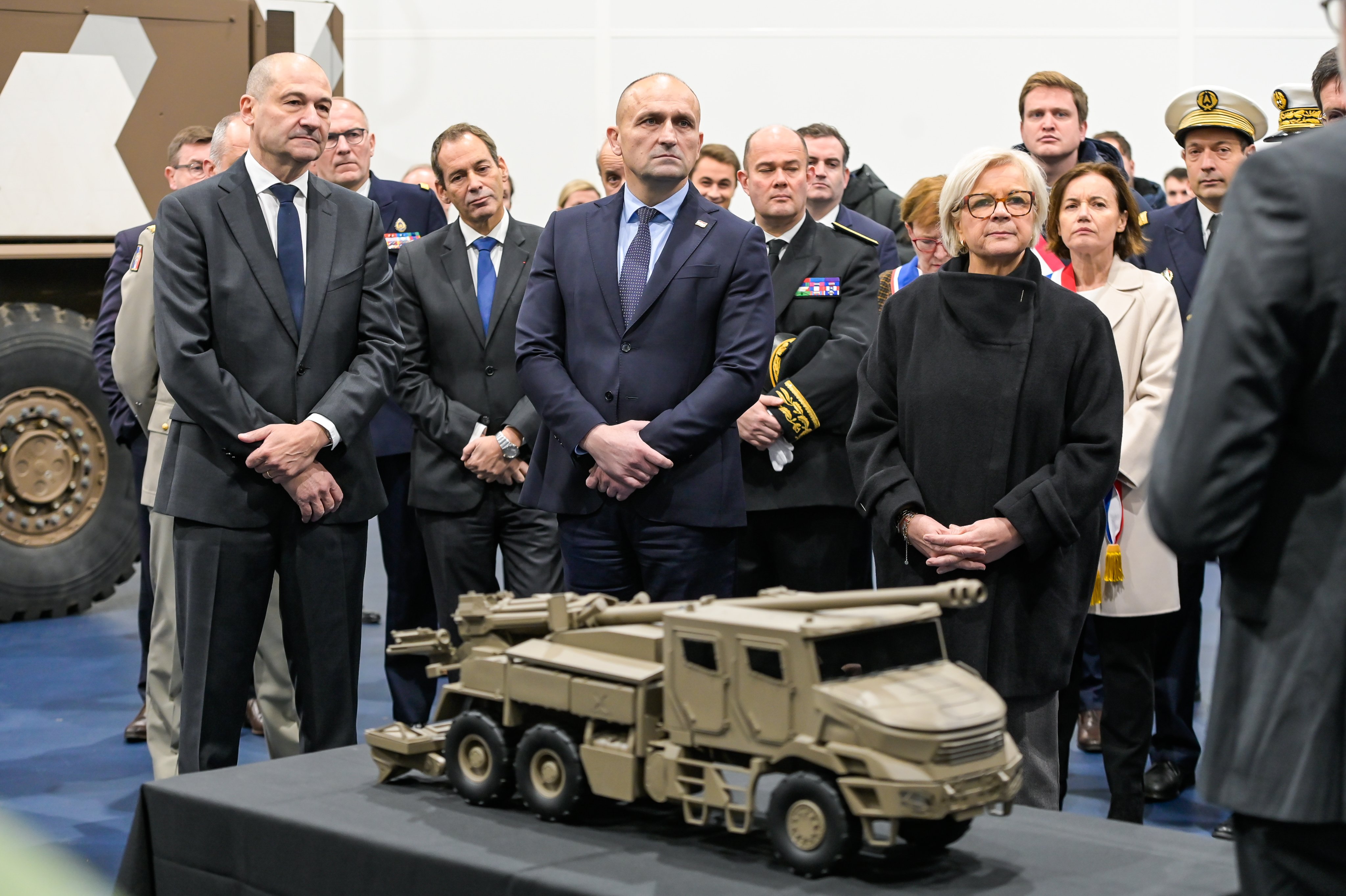Since the dawn of aviation, technology has shaped air warfare. In the face of hardening threats, agility, reactivity and resilience should be the drivers of strategic thought on use of the air arm. In favouring speed, range and precision, emerging and disruptive technologies will improve force generation and sustainability. Digital transformation is the catalyst at the heart of what is at stake in the future competitive environment.
Emerging Technologies and the Future of Air Warfare
Since the advent of aviation, technology has always shaped the face of air warfare. Advances in micro-electronics in the 1970s rendered it even more lethal and decisive, as the resounding successes in the 1991 Gulf War demonstrated twenty years later. In the immediate one-sided aftermath of the fall of the Soviet Union, air supremacy became one of the instruments of US grand strategy, ensuring its almost unchallenged domination of airspace and exo-atmospheric space.(1) To counter this asymmetrical advantage, China and Russia have established postures of anti-access and area denial (A2/AD). Principally designed to counter the comparatively crushing advantage of Western air forces, these postures have gradually mutated into tools for aggressive creation of sanctuaries(2) based on long-range strikes, air defence and anti-space assets, and also means of cyber warfare and electronic warfare (EW).
The war in Ukraine and the growing tensions in the Strait of Taiwan are clear evidence of entry into an era of inter-state competition marked by a lack of inhibition over the use of force, technological levelling and contest for common spaces. In this new strategic context the fight for control of different environments is quietly indicating the return of air power in its principal form, the use of force to achieve or contest control of airspace.(3) The technological dynamics that go with confrontation in the air environment raise the question of emerging technologies and the potential disruption they might cause to the conduct of air warfare. This article proposes to give some insight to this by outlining the future of aerospace action.
C4ISR(4) Architecture and Control of the EM Spectrum: New Focal Points of the Air Campaign
The apparent lack of air superiority in the Ukrainian conflict(5) might wrongly lead one to believe that future high-intensity engagements could take place without air cover. Nevertheless, in the face of increasing threats, mastery of the skies is more than ever a central issue. In the first place, because without air cover ground forces are vulnerable to enemy bombing but also because the air arm is an essential link in the C4ISR chain which enables in-depth strikes even in a difficult EW environment.(6) In likely future conflicts, gaining temporary air superiority will remain essential for creating local ‘hyper-superiority bubbles’ within a framework of Multi Domain Operations (MDO). In particular it will be one of the links in a multi-sensor and multi-effector network which will offer an operational advantage over the adversary. Far from being marginalised, air power will expand in order to reconcile the demands of qualitative(7) and quantitative(8) superiority, command of the EM spectrum, MDO integration and interoperability.
To face these challenges and counter adversaries who had reached technological parity.(9) in 2014 the United States launched the Third Offset Strategy(10) which uses its technological superiority to benefit from advances in the fields of Artificial Intelligence (AI) and robotics. This compensation strategy relies in particular on a combination of emerging capabilities and new concepts for use, centred on the use of drones and autonomous systems.(11) Like any strategy, it has a dialectical element, since Russian and Chinese equipment strategies could be read as an movement to counter to the US Third Offset Strategy. In reaction to the growing importance of C4ISR architecture and connectivity in US concepts of operations,(12) Beijing and Moscow have sought to boost their anti-C4ISR and EW capabilities. The creation in 2015 of the Strategic Support Force(13) bears witness to the Chinese aim to put the concept of System Destruction Warfare into operation in order to drive an adversary into cognitive paralysis.(14) In the Chinese approach of intelligent warfare, technologies such as AI, cloud computing and swarm operations will play a major role, even to the extent of changing the conditions for victory itself.(15)
Aerospace Action in 2040: a Favourable Context for Disruptive Technologies
Full consideration the impact of emerging and disruptive technologies on air warfare requires a clear outline to be drawn. First, we need to take strategic cultures into account, along with national systems for innovation and scenarios for possible engagements, whilst integrating current capability trends and existing orders of battle. Second, we need to set a sufficiently distant horizon so that technologies that are now still emerging can reach the necessary level of maturity to have a significant effect on the use of air power. Conversely, we must exclude from our approach those technologies whose development is too uncertain or whose predicted maturity will be beyond a reasonable horizon. This is why 2040 would seem a judicious choice. Third, insofar as air power has different aspects, and where it helps to achieve the effects required by both forces and political power, it would seem appropriate to focus on the most technologically intensive missions. That does not mean that technological disruption in other applications of air power will not have major strategic implications,(16) more that the technological building blocks and the multiplicity of their interactions in the future operational environment constitute one of the factors that could lead to the emergence of new concepts of use and to substantial improvement in military effectiveness on the battlefield.
By the 2040 horizon, the first operational capabilities of latest-generation air combat systems should have been announced. By then, too, the United States will have integrated the Next Generation Air Dominance (NGAD) initiative together with its accompanying drones, known as Collaborative Combat Aircraft,(17) into their inventory, where they will operate alongside some 225 B-21 which should then be in service. The range of air-carried munitions should by then be expanded with hypersonic cruise missiles,(18) anti-IADS missiles(19) and very long-range air-to-air missiles.(20) They will provide the US Air Force with missiles equivalent to the European Meteor, the Russian R-37M and the Chinese PL-17, whose estimated range is around 400 kilometres.
The Europeans and their partners will be starting to use the first equipment coming from the Global Combat Air Programme (GCAP)(21) and the Future Combat Air System (FCAS)(22) together with their associated drones.
The Russians are expected to have integrated no fewer than 76 Su-57 Felon stealth fighters and Su-70 Okhotnik-B combat drones into their arsenal.
Various versions of the J-20 and J-31 should by then be in service with the Chinese Air Force and Navy.(23) A wide variety of drones might add to this fleet of combat aircraft, providing Beijing with brand new capabilities. Without seeking to be exhaustive, it is worth mentioning the WZ-8 supersonic reconnaissance drone, the GJ-11, WZ-3000 and FH-97 stealth combat drones, the FH-95 EW drone(24) and the High Altitude, Longue Endurance (HALE) reconnaissance drones such as the WZ-7 Soar Dragon and the Divine Eagle. The latter has a double fuselage containing a low-frequency, bi-static radar which could possibly be intended to detect stealth aircraft: if this were the case, it would limit the freedom of action of the United States and its allies which use such stealth craft. It would also alter US strategic calculations of the cost of an armed confrontation. We must not forget the dominant role played by constellations of satellites for the C4ISR, targeting and early warning of each of the strategic competitors. In this field, too, China will be on an even footing with the United States in its area of interest.(25)
Cartography of Emerging Technologies and Disruption in the Aerospace Domain
In this strategic environment, what do emerging and disruptive technologies promise? Before deciding what their promise might be, we need first to look at what they are, then at what they could change in air warfare. There are several definitions of emerging technologies and disruptions. The European Defence Agency (EDA) and NATO agree on the main fields of application of Emerging and Disruptive Technologies (EDT),(26) though they differ in their interpretation: EDA considers them as technologies that will lead to radical change in the conduct of war in one or two generations,(27) whereas NATO distinguishes disruptive technologies(28) from emerging ones.(29) Moreover, NATO adds that these technologies could combine and lead to the development of disruptive applications which cross connect to intelligent, interconnected, distributed digital systems.(30) Nevertheless, this vocabulary does not offer a practical view of the disruptive potential of these technologies in the aerospace domain. We therefore have to turn to other, more operational classifications which detail the technological building blocks themselves. The Critical Technology Tracker has counted 44,(31) while other classifications count up to nearly 200 technologies that could affect military security over the next thirty years.(32) In France, a 2022 reference document on defence innovation policy (Document de référence de l’orientation de l’innovation de défense—DrOID) gave some detail on emerging defence technologies: quantum detectors (ultra-stable, miniaturised micro atomic clocks and spectrum analysers, for example), stealth materials, ballistic protection, high-temperature materials, functional textiles, manufacturing additives, radar treatments, new optronic technologies, such as laser sources, active 3D imagery and energy efficiency, among others.(33)
The operational aerospace environment as it seems to be evolving is part of the complex dynamics of transformations in military capabilities.(34) Its trend is towards reduction in firepower and protection to the benefit of speed, range and precision, and also of capabilities that help win the competition between detection and evasion.(35) Emerging and disruptive technologies could therefore be arbitrarily classified as a function of their potential impact on the following characteristics of air power: speed, range, precision, detection, evasion, saturation, command of the EM spectrum and force generation. The table presents a grid of possible uses of emerging and disruptive technologies in future aerospace activity.
Although it is impossible to expand upon every case shown in this table, it is clear that there is potential for some of this technological disruption to change the face of air warfare significantly. Just as range, precision and speed will be increased by the development of new materials and means of propulsion, so AI, autonomous systems and connectivity will contribute to accelerating the engagement cycle. Together they will boost the importance of the human decision maker in the collaboration between man and machine. In that context, AI will generate an agile mass from a distributed network of intelligent agents able to collect, compute, interpret, share and act within parameter limits set by humans.(36)
Paul Scharre, vice-president and scientific director of the Centre for a New American Security (CNAS), reminds us that the measurement of military power has changed in the digital age. Ships, aircraft, tanks and troops on the ground still count, but what counts more is their digital capability: sensors to detect the enemy, data-handling algorithms, networks for transmitting information, appropriate C2 (Command and Control) for making decisions, and intelligent munitions for hitting targets.(37) As evidence of the transformation underway, General Masaki Oyama, head of the GCAP programme in the Japanese Acquisition, Technology & Logistics agency (ATLA) stated that while the cost of integrated communications systems (ICS) and on-board electronics (Integrated Sensing and Non Kinetic Effects – ISANKE) could amount to 25 per cent of the total programme cost (compared with around 10 to 15 per cent in previous generations’ programmes), they could contribute to over 50 per cent of the overall military effectiveness of the system.(38)
* * *
With the certification in March 2023 of the F4.1 standard of Rafale, the Air and Space Force is also at the vanguard of current transformations. This standard in particular is said to offer improved capability for data exchange and better protection against cyber threats.(39) France is now on the front line for entering the era of connected, collaborative combat and is thus paving the way towards FCAS.
In the face of hardening of threats, agility, reactivity and resilience must guide strategic thought on the use of air power. The development of new logistic concepts such as the US Agile Combat Employment, for example, could permit the generation and deployment of forces in a more reactive manner. There, too, emerging technologies will be decisive and need to be considered within an overall approach that favours operational, technical and logistic interoperability.
In conclusion it should be kept in mind that any innovation is the result of a meeting between technology, use and will. Victory in future air operations will therefore come as much from aviators’ appropriation of emerging technologies as from the willingness of the forces to commit to the necessary transformations to encompass the new realities of war. In conflicts to come, digital transformation will be at the heart of the challenges of modernisation because it is the catalyst for the most disruptive of technologies. On it depends the operational superiority of tomorrow’s air forces. ♦
(1) Posen Barry R., Command of the Commons: The Military Foundation of US Hegemony, International Security, Vol 28, No 1, July 2003, p. 8 (http://web.mit.edu/SSp/people/posen/commandofthecommons.pdf).
(2) Rosselet Mélanie, La crise ukrainienne a aussi une dimension nucléaire [The Ukrainian crisis also has a nuclear dimension], Le Monde, 2 February 2022.
(3) Julian Corbett’s distinction between strategy of control and strategy of denial is equally valid in the air environment. The use, albeit limited, of Ukrainian air and ground-based air defence assets is nevertheless a residual threat that the Russian air forces have to take into account. They are the incarnation of the concept of a live fleet, which could be brought into action in a strategy of denial of the strong by the weak.
(4) Command, Control, Communication, Computers, Intelligence, Surveillance and Reconnaissance.
(5) Pappalardo David, Guerre aérienne en Ukraine : le problème de Diagoras [The air war in Ukraine: the problem of Diagoras], Le Rubicon, 5 August 2022 (https://lerubicon.org/).
(6) For example, Russian EW assets, notably for jamming GPS, have been used in Ukraine to disrupt GPS-guided munitions. Dynamic targeting of fixed or mobile targets remains possible even in a jamming environment with laser designation or, in lesser measure, with inertial guidance. Mizokami Mike, How Russian Jamming Is Foiling Ukraine’s GPS-Guided Bombs, Popular Mechanics, 20 April 2023 (https://www.popularmechanics.com/).
(7) In 2030, nearly 1,600 multi-role combat aircraft will still be stationed in Europe: 600 Lockheed Martin F-35, 300 Dassault Rafale, 450 Eurofighter Typhoon and 230 SAAB Gripen.
(8) Development of semi-autonomous Remote Carriers and intelligent munitions at reasonable cost will, for example, increase detection ranges, limit human attrition and saturate enemy defences.
(9) Bronk Justin, Russian and Chinese Combat Air Trends: Current Capabilities and Future Threat Outlook, Whitehall Report 3-20, RUSI, 52 pages (https://static.rusi.org/).
(10) The 3rd Offset Strategy was launched in November 2014 by the US Secretary of Defense Chuck Hagel as part of the Defense Innovation Initiative. It aimed at ensuring US technological superiority with the objective of countering any technological catching-up and preserving a competitive advantage over the main strategic competitors of the United States.
(11) Krepinevich Jr Andrew T, The Origins of Victory: How Disruptive Military Innovation Determines the Fates of Great Powers, Yale University Press, 2023, p. 495.
(12) Joint All Domain Command and Control (JADC2) and the Air-Sea Battle rely on the informational superiority and agility that should flow from integration of technological processes in the fields of AI, connectivity, robotics and space.
(13) The Chinese Strategic Support Force is in charge of conducting operations in cyber space and in exo-atmospheric space. It is also responsible for military intelligence and electronic warfare.
(14) Perspective on the Evolution of Winning Mechanism in Intelligent War, ??????, 26 April 2022 (https://www.lwxsd.com/pcen/info_view.php?tab=mynews&VID=23346).
(15) Wu Mingxi, Zhu Qichao and Pang Chaowei, Intelligent Warfare: Prospects of Military Development in the Age of AI, 1st ed., London, Routledge, 2022, p. xvi.
(16) The Air Force Research Laboratory (AFRL) is working on a leading project which uses a cargo rocket to transport up to 100 tons of freight as close as possible to theatres of operations in order to accelerate strategic logistics significantly. AFRL, Rocket Cargo For Agile Global Logistics (https://afresearchlab.com/technology/successstories/rocket-cargo-for-agile-global-logistics/).
(17) In the budget request for fiscal year 2024, the initial order was for 200 NGAD and 1,000 CCA. These figures are only for the first tranche and are established on the basis of 2 CCA per NGAD and 3 per F-35. Marrow Michael, Next Gen Numbers: Air Force Plans first “Nominal” buy of 200 NGAD Fighters, 1,000 Drone Wingmen, Breaking Defense, 7 March 2023.
(18) Air-Launched Rapid Response Weapon (ARRW) and Hypersonic Attack Cruise Missile (HACM).
(19) Tirpak John A., New SiAW Seen as Modular, Pathfinder Weapon, Air & Space Forces Magazine, 15 June 2022 (https://www.airandspaceforces.com/new-siaw-seen-as-modular-pathfinder-weapon/).
(20) The AIM-260 Joint Advanced Tactical Missile (JATM) and the Long Range Engagement Weapon (LREW) are the main long-range air-to-air missiles under development in the United States—the first is intended to be carried in the internal bays of stealth fighters and the second, heavier and fitted with a ramjet, would be carried on an external pylon. Cf. Hollings Alex, America has 6 New Air-To-Air Missiles Headed for Service, Sandboxx, 6 March 2023 (https://www.sandboxx.us/blog/america-has-6-new-air-to-air-missiles-headed-for-service/).
(21) A merger of the Tempest (United Kingdom, Italy and Sweden) and F-X (Japan) projects.
(22) Developed by France, Germany and Spain.
(23) Bronk Justin, op. cit., p. 32 and p. 41-43.
(24) Xuanzun Liu, China’s FH-95 Electronic Warfare Drone Passes Performance Test, Global Times, 26 July 2022 (https://www.globaltimes.cn/).
(25) Jennings Peter, The Implications of China’s Military Modernization for Australia and Regional Security in Bates Gill (dir.), Meeting China’s Emerging Capabilities: Countering Advances in Cyber, Space, and Autonomous Systems, p. 26. Tzeng Yisuo, China’s Military Modernization in Autonomous, Cyber, and Space Weapons: Implications for Taiwan, in Bates Gill (dir.), op. cit., p. 38-41.
(26) Big Data, AI, robotics and autonomous systems, space, hypersonics, biotechnologies, quantum technologies, and new materials. Other classifications include connectivity and/or directed energy weapons.
(27) Loiseau Nathalie, Beyond pragmatism—Towards the European Defence Union—Opinion Editorial by the Chair of the European Parliament’s Subcommittee on Security & Defence (SEDE), European Defense Matters, n° 18, 2019, p. 8-9 (https://eda.europa.eu/).
(28) Technologies which could have major, even revolutionary, effects on NATO activities in the period 2020-2040.
(29) Those which will arrive at maturity in the period 2020-2040 and whose effects on NATO are not yet entirely predictable.
(30) NATO Technology Trends Report 2020-2040, 2020, p. 6.
(31) Gaida Jamie, Wong-Leung Jenny, Robin Stephan et Cave Danielle, ASPI’s Critical Technology Tracker: Who is leading the Critical Technology Race?, Australian Strategic Policy Institute, 2023, p. 8.
(32) Mingxi Wu, Zhu Qichao et Pang Chaowei, Intelligent Warfare, op. cit., p. 24.
(33) Agence de l’innovation de défense, Document de référence d’orientation de l’innovation de défense (DrOID) 2022 [Reference document on policy concerning innovation in defence], Ministère des Armées, 2022, p. 32 (https://www.defense.gouv.fr/sites/default/files/aid/DrOID%202022.pdf).
(34) Krepinevich Jr Andrew T., op. cit., p. 495. A future volume on this subject will be Gros Philippe, Tourret Vincent, Thomas Aude, Tenenbaum Élie et Péria-Peigné Léo, Hypothèses stratégiques et transformations des capacités militaires à l’horizon 2040, (Strategic hypotheses and transformations in military capabilities by around 2040) Observatoire des conflits futurs, 2022, p. 44-46. Among the main current transformations they identify in particular are diffusion of the reconnaissance-strike complex, autonomous airborne systems and the transformation of space support structure. MDO integration, the arming of space, seabed warfare, robotisation of the ground environment and the transformation of air and missile defences are all included in emerging transformations. In his holistic view, Andrew Krepenevich evokes the democratization of destruction as the central element of the next revolution in military affairs.
(35) This is to translate in the least bad way the notion of Hider-Finder Competition, which is found in strategic literature. Krepinevich Jr Andrew T., op. cit., p. 74.
(36) Brose Christian, The Kill Chain: Defending America in the Future of High-Tech Warfare, New York, Hachette Books, 2020, p. 146.
(37) Scharre Paul, Four Battlegrounds: Power in the Age of Artificial Intelligence, W.W. Norton & Company, 2023, p. 278.
(38) White Andrew, New UK-Japan-Italy Fighter takes Shape, with Electronics Details Emerging, Breaking Defense, 20 March 2023 (https://breakingdefense.sites.breakingmedia.com/).
(39) Lagneau Laurent, Le Rafale porté au standard F4.1 a été qualifié par la Direction générale de l’armement, [The F4.1 standard of Rafale now qualified by the Directorate-general of armament], Zone militaire–Opex360.com (https://www.opex360.com/).







